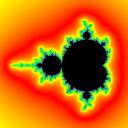Yahoo Clever wird am 4. Mai 2021 (Eastern Time, Zeitzone US-Ostküste) eingestellt. Ab dem 20. April 2021 (Eastern Time) ist die Website von Yahoo Clever nur noch im reinen Lesemodus verfügbar. Andere Yahoo Produkte oder Dienste oder Ihr Yahoo Account sind von diesen Änderungen nicht betroffen. Auf dieser Hilfeseite finden Sie weitere Informationen zur Einstellung von Yahoo Clever und dazu, wie Sie Ihre Daten herunterladen.
Non-matching cards probability?
In a card game, two players each start with half of a shuffled standard deck. Each player alternately turns up the top card of their pile.
What is the probability that the players will turn over 4 cards ( 2 each) without a match ?
llaffer: the "non-match" is to be between the two players, eg if the 1st player's cards are, say, K & Q, the 2nd player must not have cards of rank K or Q.
btw, how do i remove the image accidentally invoked ?
done, mercifully !
Good try, Nick, though I believe the answer may not be correct. In any case, after seeing a video explanation of the rules of "snap" (on which this problem has been based), the exact condition is that when the 2 players open a card *turn by turn*, *no consecutive cards* should match.
some 10 hours later, I will recheck your answer for the conditions you took.
for any future answerers: please note the precise definition of "non-matching" in Update 3, and answer accordingly.
2 Antworten
- Divide By ZeroLv 7vor 7 JahrenBeste Antwort
Here's how I understand the question. Let x and y be Bob's cards and a&b be Alice'. Bob flips a card first and they alternate turns.
It goes x-a-y-b
Therefore:
a can't match x or y.
b can't match y.
I tried this 2 different ways, both of which get an answer of 3464/4165 or about 83.169%. Since the methods agree, I feel good about my answer.
First (and better) method:
Pr(condition met) = Pr(a&b both different from x&y) + Pr(1 card is the same) * Pr(card is in the wrong spot to match)
Pr(a&b both different) = [(48/51)*C(44,2) + (3/51)*C(48,2)] / C(50,2)
(where 48/51 is the probability that x&y are identical, and 3/51 is the opposite)
Pr(one card the same) * Pr(wrong spot) = (48/51)*6*44 / C(50,2) / 4
(There are 4 ways to permute a&b and x&y, and only one permutation is valid for our purposes.)
The sum of those is 3464/4165
Second method:
Pr(x or y matches a) = 3/51 + (48/51)(3/50) = 49/425
Pr(opposite of that) * Pr(y matches b) = 376/425 * [Pr(y not x)*Pr(b=y) + Pr(y=x)*Pr(b=y)]
= 376/425 * [(44/47)(3/49) + (3/47)(2/49)] = 701/4165
answer = 1 - that = 3464/4165
- llafferLv 7vor 7 Jahren
The first card can be anything, so 52/52 = 1, so that doesn't change anything yet.
We want the remaining cards to NOT match the first card.
The second card, there are 3 cards left that will match the first card out of the remaining 51, so there are 48 out of 51 cards that are acceptable: 48/51
The third card has the same 3 cards we don't want left out of the remaining 50, so 47 cards are acceptable: 47/50
And the last card, similar logic. 46/49
Multiply them together, and that is your probability that you will not have a pair out of 4 cards:
48/51 * 47/50 * 46/49 = 103776/124950 = 0.8305
About 83% chance of that happening


